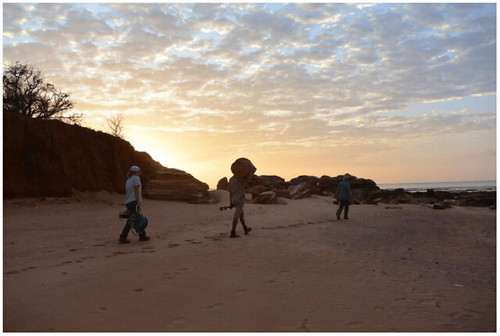
Early morning net set © Global Flyway Network
Catching birds on the northern shores of Roebuck Bay is relatively easy, not easy but relative to other sites. However the minute I need to catch a specified species as opposed to ‘birds’ it all seems a bit trickier.
The first planned catch day was postponed as I couldn’t reccy on the previous day. I am sure the mud flats between the mangroves and Crab Creek have risen in height in my time here. High tides that used to push the birds off the mud and on to the beaches no longer do so and I have to adjust my years of thinking ‘this tide will work for scanning/catching’.
The reccy suggested Eagle’s Roost as the place to be and so it turned out with a catch of 127 birds including 116 Great Knots completed the next day. This enabled us to take the first 20 Great Knot in to captivity for the exploration experiment and subsequently for 13 of them to be fitted with a 5g Microwave Telemetry Satellite Transmitter.
So next is the Bar-tailed Godwits. Cue sleepless nights! Bar-tails roost on the seaward side of the flocks and more often than not have a few thousand Great Knots in front of them. So getting them close enough to catch safely is not easy to make work even with our brilliant ‘twinklers’.
Our next try was at the far eastern end of Wader Beach. We catch fairly often on Wader Beach (much to the displeasure of all involved in the net and cage set up). I don’t usually set as far to the east on the beach but I did as lots of Godwits had been there the day before.
Getting birds in front of the net was not a problem, about 1,000 birds catchable! Of which at least 150 were godwits!
2 problems.
1. the team was too small to catch that many birds.
2. Oh yes and the godwits were Black-tails! Usually a high priority species but it was Bar-tails we needed.
I was just sending Nigel out to move the whole lot away from the net when a Brahminy Kite swooped along the beach and did the job for us. We never got birds back. Next net set was at the far western end of Wader Beach, a place I have never set before and won’t be doing so in the near future. No catch.
Day-off so I can do a thorough reccy, the reccy didn’t produce anything promising. Another day-off for more reccying. Not masses of birds around as the big tides had made the salt marsh behind the mangroves attractive to the birds to roost on.
Still Stilt Viewing looked a good bet.
Getting a bit nervous now we really need the Bar-tails.
Thousands of birds around close to the net but rarely in front of it. Nigel did some fantastic twinkling, getting birds to walk a hundred metres or more but they gradually peeled off and went behind the mangroves so I took a small catch and we got a two transmitters on. We need female Bar-tailed Godwits and they need to be 3+ in age.
OK it’s getting tense now (for me, the rest of the team seem fairly relaxed!) While watching the action unfold on the last catch I have a very good idea of where the net should go for our next attempt. I really need enough Bar-tails and Great Knot to get all the birds for transmitters. It is hot, the team is small and getting tired and they do have other lives to lead!
All went smoothly and we made a big catch of about 300 birds. We let at least half of them go directly from the net due to the team size.
12 more godwits got transmitters and another 20 Great Knots were taken back to the Great Knot Hotel (my house) where Ginny and Lee looked after them with meticulous care. Aircon, cleaned out daily and ad-lib meal worms. That’s better than I get treated!
The strongest and most relaxed Great Knots were gradually released after they had done their experiment and been fitted with a transmitter and they are all now out in the bay again.
Although we didn’t catch huge numbers of birds we did catch a lot of adults and we got some old retraps.
Bar-tailed Godwit 14+, 16+, 17+, 18+, 23+ and 26+.
Great Knot 14, 17+, 18+, 20+ and 20+.
Remember if the age has a plus sign after it that is the minimum age of the bird.
As always with these reports my thanks and those of Ginny and Lee go out to the fantastic, dedicated volunteers form the Broome community. This work would not happen without them.
Catch details are below.
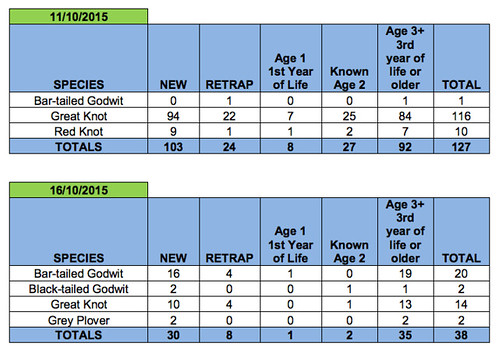
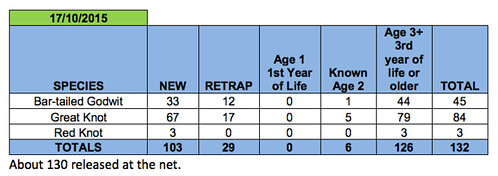
About 130 released at the net.
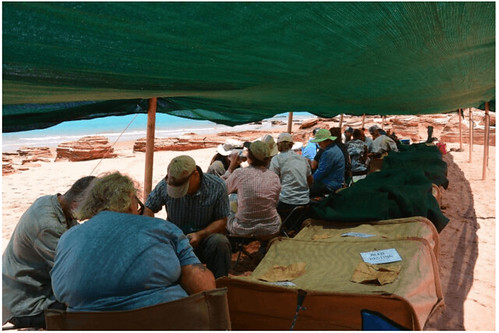
Processing the catch © Global Flyway Network
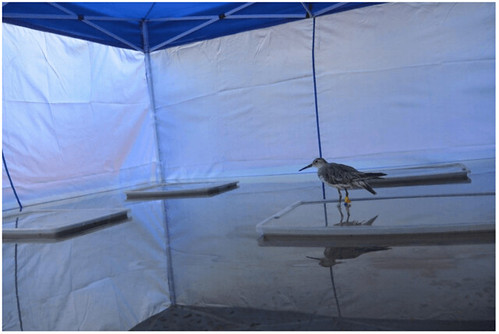
An ‘explorer’? © Global Flyway Network

The Great Knot Hotel © Global Flyway Network
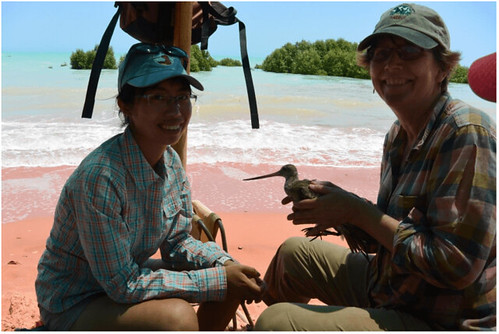
Satellite Girls © Global Flyway Network
Original post: http://globalflywaynetwork.com.au/satellite-telemetry-project-2015/
Follow up on Satellite Tracking Project 2015 Updates from Global Flyway Network: http://www.eaaflyway.net/satellite-tracking-project-2015-updates-from-global-flyway-network/




